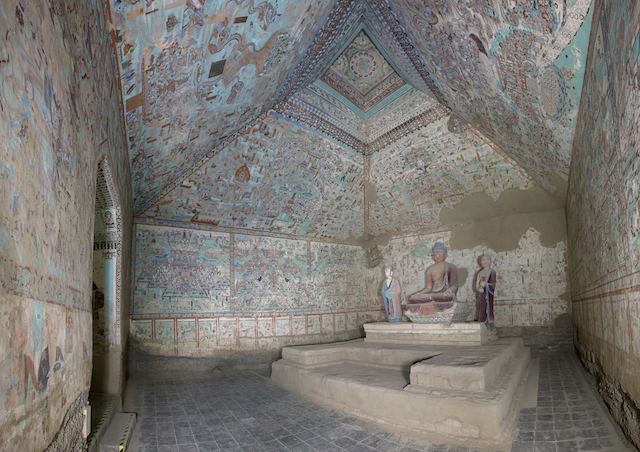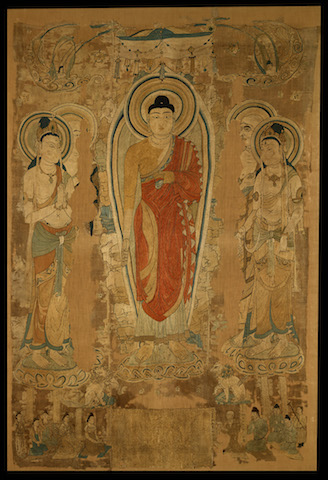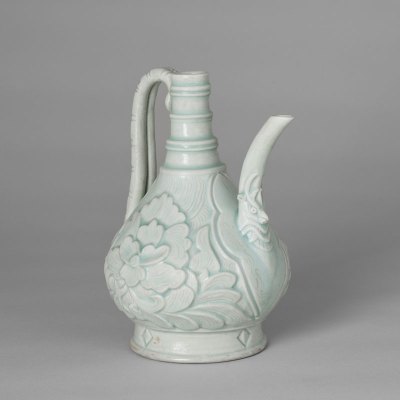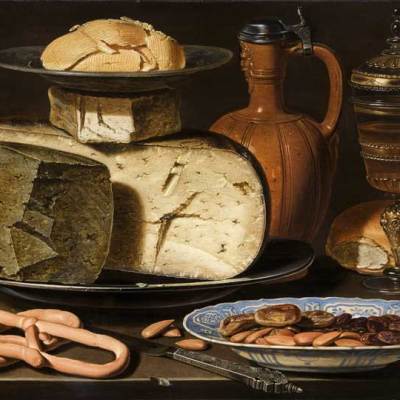On the western edge of the Gobi Desert, near the oasis town of Dunhuang, China, hundreds of cave temples – the Mogao Grottoes – were carved into a cliff face and decorated with Buddhist wall paintings and sculptures by artists about whom we know little. From the 4th to the 14th century, this site was an extraordinary place for the interchange of religion, culture, and commerce along the trade routes linking the East and West, known collectively as the Silk Road.
‘Cave Temples of Dunhuang: Buddhist Art on China’s Silk Road’ is the result of an intercultural exchange of another kind. In addition to exploring the art-historical and cultural significance of the Mogao caves, the exhibition highlights more than 25 years of collaboration between the Getty Conservation Institute (GCI) and the Dunhuang Academy to protect and conserve this UNESCO World Heritage Site. GCI scientists and conservators, led by scientist Neville Agnew, have worked closely with colleagues at Dunhuang to stabilise the cliff face at this site, and to study and mitigate the danger posed by flooding and sand storms. They have also developed techniques to conserve the wall paintings and sculptures.
Cave 85, view of the interior, Mogao caves, Dunhuang, China (Late Tang dynasty, 848-907 CE). © Dunhuang Academy

Through precious works of art loaned from European museums, as well as photographs, videos, and elaborate replica caves, the exhibition tells the story of one of the world’s greatest cultural treasures – the complexities of its genesis and proliferation, the threats to it from humans and nature, and its miraculous survival over more than 1,500 years.
The three replica caves, decorated with exquisite Buddhist painting and sculptures, were made by artists at the Dunhuang Academy, who visited Los Angeles in March and April to install them in a temporary structure on the plaza of the Getty Center. In the Getty Research Institute galleries, 44 objects discovered at Mogao in 1900 in Cave 17, known as the ‘Library Cave’, are on view. They include manuscripts, paintings on silk, embroideries, preparatory sketches, and ritual diagrams from the 8th to the 10th centuries loaned by the British Museum, the British Library, the Musée Guimet, and the Bibliothèque nationale de France. Most of these works of art have never been seen in the United States before.
Śakyamni preaching on Vulture Peak (c. 700s CE). © The Trustees of the British Museum

These extraordinary objects shed light on the co-mingling of major cultures – Greek and Roman via Gandaran India, Middle Eastern and Persian, Indian and Chinese – that characterised life and commerce in Dunhuang. A highlight of the exhibition is the Diamond Sutra of c. 868 CE: this sacred Mahayana Buddhist text is the world’s oldest dated complete printed book. Other objects on view include a Buddhist sutra in Tibetan, with commentary in Chinese; a Jewish prayer in Hebrew; and a Christian manuscript in Chinese. These were all written no later than the 10th century and they all demonstrate the diversity of languages, religions, and cultures along the Silk Road.
Nothing can replicate the unique experience of stepping inside the sacred, ancient caves at the Mogao Grottoes but, for visitors in Los Angeles, a multimedia experience offers an impressively realistic alternative. Two multimedia galleries at the Getty Research Institute present visitors in the Mogao site with a large panoramic projection of the cave temples in their stark desert setting; there is also a three-dimensional stereoscopic view of Cave 45, a finely decorated high Tang dynasty cave with a seven-figure sculpture group that is one of the treasures of Mogao.
‘Cave Temples of Dunhuang’ also provides a chance to comprehend the creative, intellectual, and spiritual environment of early medieval China, as well as the considerable cultural impact of the transmission of Buddhism along the Silk Road. The exhibition illustrates the way in which a combined knowledge of art history and conservation science can work together to deepen our collective knowledge and to safeguard world heritage.
‘Cave Temples of Dunhuang: Buddhist Art on China’s Silk Road’ is at the Getty Center from 7 May to 4 September.
From the May issue of Apollo: preview and subscribe here.


